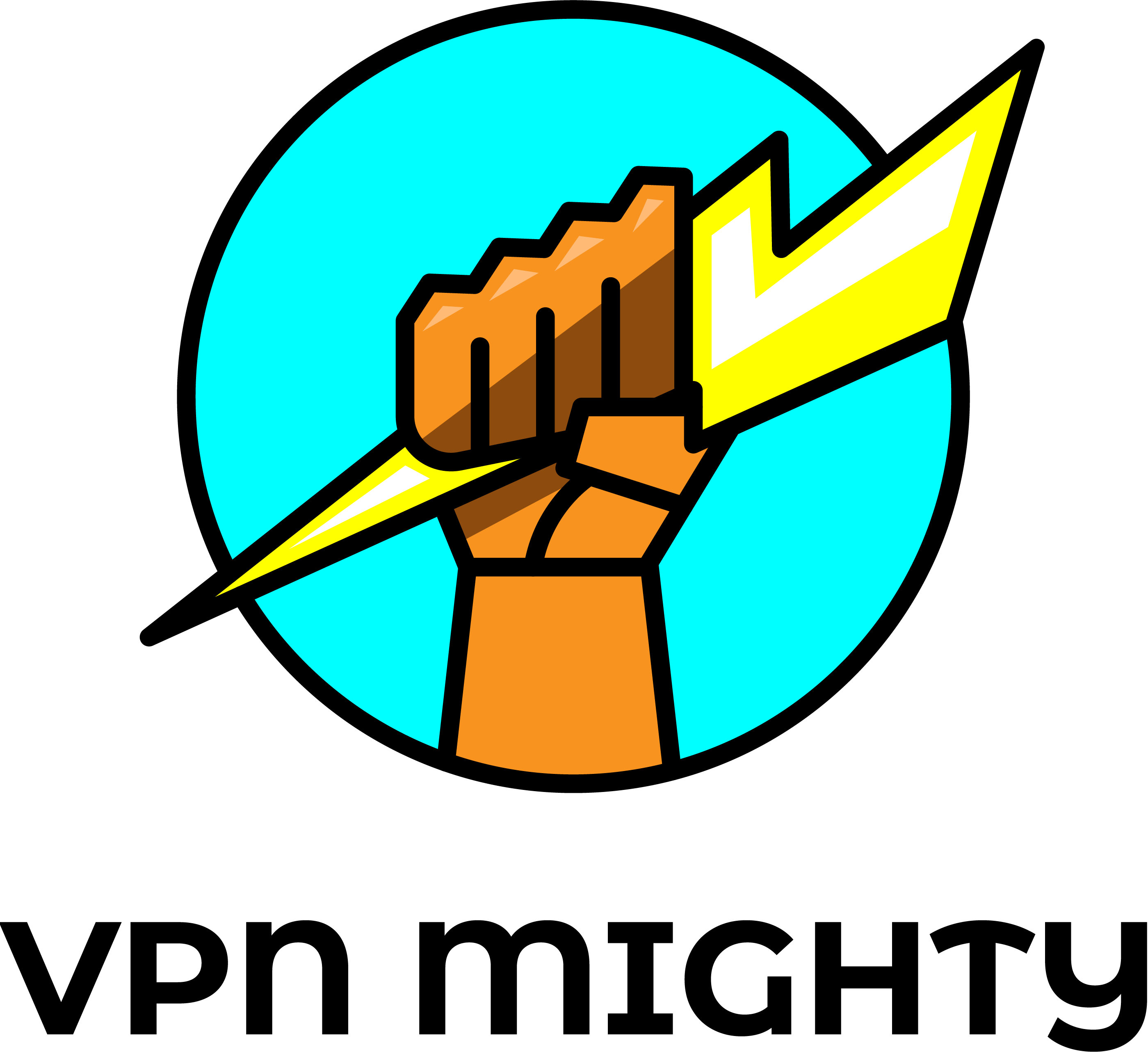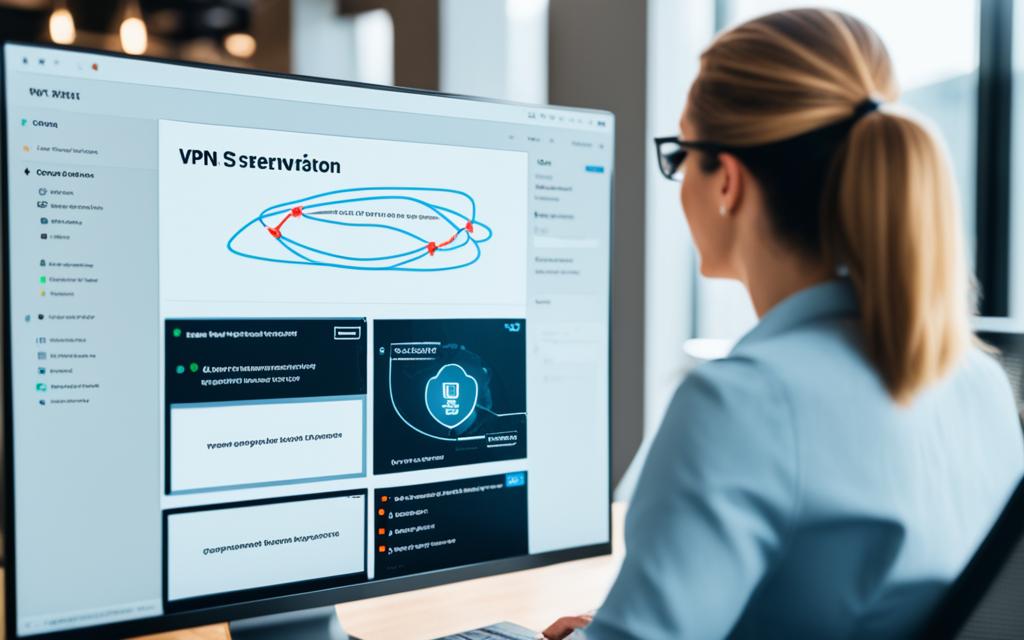How to Host My VPN: Step-by-Step Setup
Ever thought about hosting your own VPN at home? I did, and it opened up a world of possibilities. Setting up a VPN at home means I can control my online privacy better. It also keeps my browsing safe. It might seem hard, but trust me, it’s not.
This article will guide you through setting up your own secure VPN. You’ll learn the benefits and the steps to follow. By the end, you’ll see how easy it is to have a VPN at home. If you want more privacy or want to save money on VPN subscriptions, this guide is for you.
Introduction to VPN Hosting
Understanding what a VPN is key to seeing its value in today’s online world. A VPN, or Virtual Private Network, creates a secure internet connection by encrypting my data and hiding my IP address. This lets me surf the web privately, something regular internet connections can’t offer. VPNs shield me from prying eyes, keeping my online actions secret.
What is a VPN?
A VPN sets up a secure tunnel for my data to travel through. This encryption keeps my internet use safe from hackers and prying eyes. It lets me access the internet as if I’m in a different place, getting past geo-blocks on content. The main perks are better privacy, security, and access to content I can’t see at home.
Why Do I Want to Host My VPN?
Hosting my own VPN has many advantages. It gives me full control over my data and privacy. I can choose how my traffic flows and what security steps to take. This avoids problems with third-party VPNs, like data sharing or unpredictable policies. Hosting my VPN means I get better performance and a network just for me. It’s great for those who value their online privacy and security.
| Aspect | Third-Party VPN | Personal VPN |
|---|---|---|
| Control | Limited | Full control over setup and configuration |
| Privacy | Subject to provider’s policies | No third-party data access |
| Cost | Monthly subscription | Initial setup, but cost-effective long term |
| Customization | Standard features only | Customizable to specific needs |
The Benefits of Hosting My Own VPN
Hosting my own VPN has many advantages that improve my online experience. It lets me control my VPN for better privacy and security. Let’s look at the main benefits.
Increased Privacy and Security
Self-hosting my VPN means I have more privacy. I don’t have to worry about companies logging my online actions. I can set up my security to fit my needs, like using stronger encryption.
This way, I can protect my online activities from others. It makes surfing the web safer for me.
Cost-Effectiveness Over Time
Using my own VPN can save me a lot of money over time. Setting it up might cost some money at first. But, I won’t have to pay monthly or yearly fees like with commercial VPNs.
Free VPNs might not be safe and can have hidden costs. By hosting my own, I save money and keep my online activities secure.
Preparing for VPN Hosting
Before I start hosting my own VPN, I need to get ready. This means picking the right hardware, getting the correct software, and setting up my network. Each step is key to a smooth and secure VPN.
Choosing the Right Hardware
I need to look at my VPN hardware needs first. I might pick a Raspberry Pi for personal use or a dedicated server for a big network. Here’s a quick look at some options:
| Device | Use Case | Performance | Cost |
|---|---|---|---|
| Raspberry Pi | Home use | Low | Low |
| Dedicated Server | Enterprise | High | High |
| VPS | Small business | Medium | Medium |
Software Requirements
Choosing the right VPN software is next. OpenVPN and WireGuard are popular choices. They offer strong security and flexibility. I should check out both to see which fits my needs best.
Network Considerations
Finally, I need to plan my network for the VPN. I must think about bandwidth, IP addresses, and router settings. For example, my router must support VPN pass-through and I need to set up my firewall right for VPN traffic.
How to Host My VPN
Setting up my own VPN might seem hard at first. But, with a clear plan, it becomes easier. This guide will walk me through installing, setting up, and testing the VPN software.
Step-by-Step Setup Process
To start hosting a VPN, I need to follow some key steps:
- Decide on a VPN provider or software, like OpenVPN or WireGuard.
- Choose the right hardware, such as a dedicated server or a compatible router.
- Get a static IP address if needed for better access.
- Install the VPN software on my server as the provider directs.
Configuring VPN Software
After setting it up, I must configure my VPN for smooth operation. This guide will help me adjust settings:
- Set up user accounts and define who can access.
- Pick encryption protocols that fit my needs.
- Adjust firewall settings to allow VPN traffic.
- Customize settings like DNS leak protection and kill switch options.

Testing the Setup
Testing my VPN is crucial to make sure it works well. I will check:
- Connection stability by logging in from different devices.
- IP address changes by using websites that show my IP.
- Data encryption levels with online tools.
By following these steps, I can set up and test my VPN. This will help me enjoy better online privacy and security.
Selecting the Best VPN Protocol
Choosing the right VPN protocol is key to a great VPN experience. It helps me find the best one for my needs. Whether I want top security, fast connections, or reliable service, knowing about VPN types helps.
Understanding Different Protocols
There are many VPN protocols, each with unique features. Let’s look at a few:
- PPTP: This protocol is simple to set up and quick but doesn’t offer much security.
- L2TP/IPsec: It gives better security but might be slower.
- OpenVPN: It’s known for strong security and flexibility, making it a favorite choice.
- WireGuard: A newer option that offers great security and better performance.
Which Protocol Should I Use?
When picking a VPN protocol, I think about a few things:
- Security Level: For high privacy needs, like online banking, I choose OpenVPN or WireGuard.
- Speed: If speed is key, PPTP could work, but I balance it with security needs.
- Reliability: Some protocols handle network changes better, ensuring smoother use.
Understanding VPN protocols helps me make smart choices. This way, I pick a VPN protocol that fits my needs perfectly.
Securing My VPN Connection
Setting up a secure VPN connection is key to keeping my online activities safe and private. Choosing the right VPN encryption and firewalls is crucial. This ensures my data stays safe from hackers and other threats. Let’s explore how to use strong encryption and set up firewalls for VPN.
Implementing Strong Encryption
For a secure VPN connection, I should pick strong encryption standards. AES-256 encryption is highly recommended for its high security and performance. Other VPN encryption methods include:
- OpenVPN: Known for its flexibility and strong security features.
- L2TP/IPsec: Combines both layer 2 tunneling and IPsec for enhanced protection.
- IKEv2: Offers fast, secure connections, particularly on mobile devices.
Using these encryption methods in my VPN setup greatly lowers the risk of data theft. This keeps my sensitive info safe and private.
Setting Up a Firewall
Firewalls for VPN are vital for securing my connection. They act as a shield between my VPN and outside threats, controlling data flow. Here are some tips for setting up firewalls:
- Enable the firewall on my router to block unauthorized access.
- Use a dedicated firewall appliance for better VPN traffic monitoring.
- Set rules to block unsecured protocols and allow only needed traffic.
With these firewalls in place, I boost my security and add an extra layer of protection against cyber threats.
Using strong encryption and effective firewalls is key to protecting my online privacy. It keeps my VPN connection secure.
Maintaining My VPN
To keep my VPN running smoothly, regular maintenance is key. This means updating software and hardware to close any gaps. Keeping an eye on performance helps my connection stay strong and reliable all year.
Regular Updates and Patches
It’s vital to stay on top of VPN updates for security. Here’s what I do:
- Check for software updates often to get the newest security features.
- Apply patches quickly to fix any weaknesses that hackers could use.
- Upgrade hardware when needed, especially if I use it more.
Monitoring Performance
Keeping an eye on my VPN’s performance is crucial for a great experience. Here’s how I do it:
- Check connection speeds often to make sure they’re good enough for what I need.
- Watch data usage to catch any big jumps that could mean a security problem.
- Look at latency levels as part of my regular checks.
Common Issues When Hosting a VPN
When I started hosting my own VPN, I quickly realized that encountering common VPN problems was part of the journey. Connection issues and performance dips can be frustrating, but understanding how to troubleshoot them makes all the difference. Here’s a look at some frequent challenges I faced and the solutions I discovered along the way.
Troubleshooting Connection Problems
Connection issues are among the most common VPN problems. I experienced dropped connections and failure to connect multiple times. Here are some steps I took to troubleshoot:
- Check internet connectivity. If my regular internet connection is down, so is the VPN.
- Examine the VPN server settings. I often had to verify the correct server address and port.
- Restart the VPN client. Sometimes, a quick reboot clears up nagging connection problems.
- Toggle between network protocols. Switching from UDP to TCP or vice versa can solve many connection issues.
Performance Issues and Solutions
While hosting my VPN, I ran into performance issues that slowed down my connection. Addressing these problems led to significant VPN performance improvements. Here are some strategies that helped:
- Utilize a wired connection. Connecting my device directly to the router often boosted speed.
- Change the VPN server location. Some servers get congested, so selecting a less crowded option improved my experience.
- Adjust MTU settings in the router. This can help optimize packet delivery and speed.
- Monitor bandwidth usage. Sometimes, other devices on the network were hogging the connection, affecting my VPN performance.
By following these troubleshooting tips, I found solutions to common VPN problems and could enhance my connection and performance. With persistence and the right approach, I tackled any issues that arose.
Conclusion
As I finish this guide, I want to share my final thoughts on hosting a VPN. Setting up my own virtual private network was a big task, but it was worth it. I learned a lot about my online privacy and can customize my VPN for my needs.
Setting up a VPN involves choosing the right hardware and software and keeping it secure. With my self-hosted VPN, I get better encryption, more control over my data, and save money over time. These benefits greatly improve my online security and peace of mind.
Hosting a VPN is a rewarding experience that makes me keep learning and adapting. It helps me stay ahead of online threats. By managing my own VPN, I’m making a smart investment in my online safety and privacy.




